As the working class continues to navigate the ever-changing political, professional and personal landscape of the 21st century, when it comes to the aftermath of COVID-19’s onset at least, optometry seems to have found its rhythm in the “new normal.” Only 9% of the 700+ ODs who responded to Review’s annual income survey reported a larger financial impact due to COVID this year than last—due to things like lower patient volume and higher practice costs. In part due to these factors and others including increased inflation, reduced reimbursement and decreased sales, just 13% noted that their annual income decreased over the last year in the field.
Down 4% from the annual income recorded by 2021’s survey, this year’s respondents made an average of $172,914 in 2022, still up from the pre-COVID era and a potential indication that optometry’s financial situation may be beginning to level out following the 2019 epidemic.
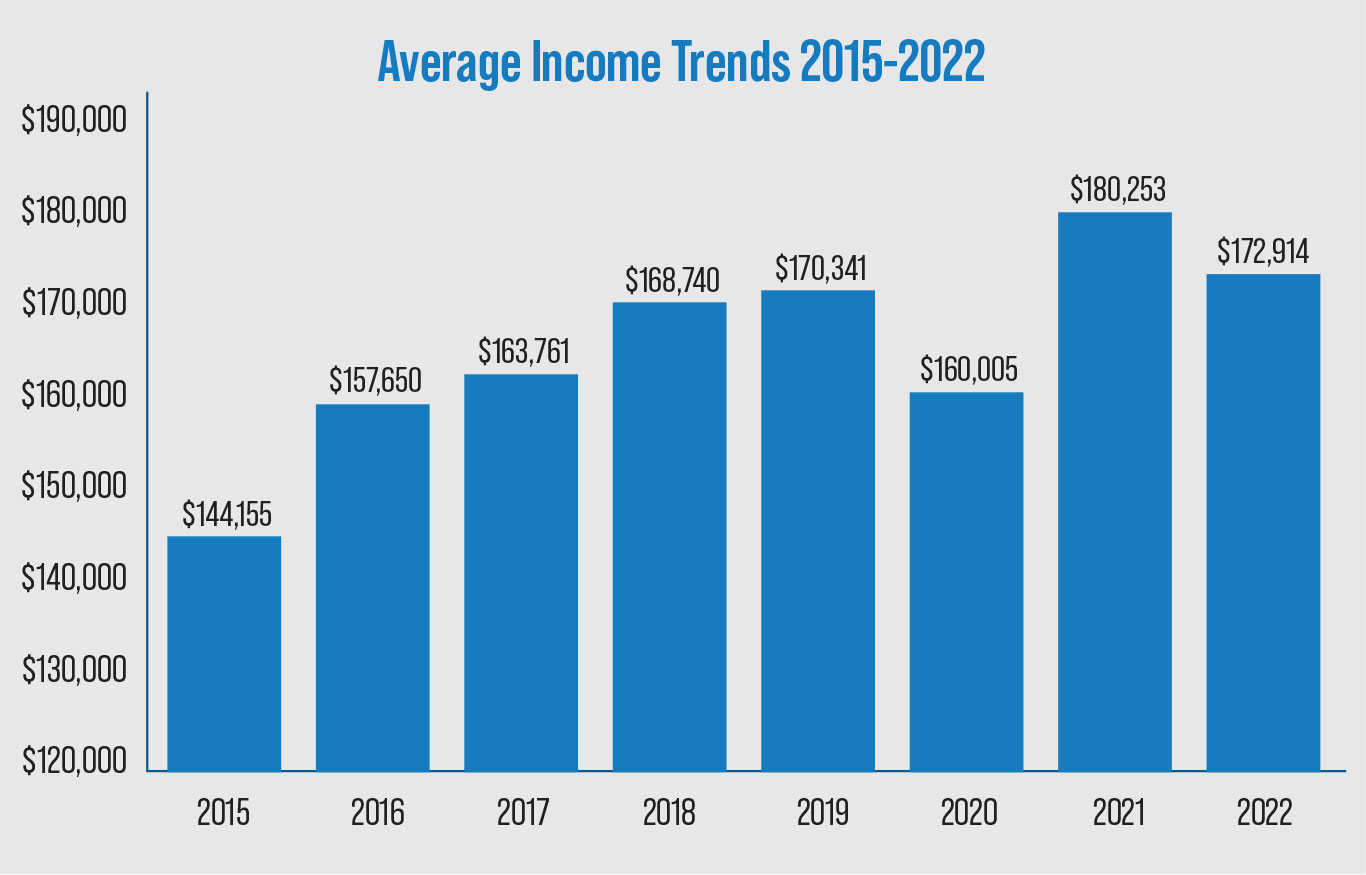 |
| Click image to enlarge. |
Along the same lines, the 84% of respondents who identified as full-time reported a slight 3% decrease in their average take-home to $180,716 in 2022. Part-timers experienced a more significant 15% drop to $123,764, hitting especially hard after last year’s 63% rise.
Editor’s note: As always, be mindful that while we ask the same survey questions, the responses we compare from year to year come from different individuals, making trend analysis tricky, especially among a smaller cohort. The results offer a representative look at the profession but aren’t considered statistically rigorous, particularly year-over-year comparisons.
In addition, while we recorded just over 700 responses this year, we omitted a small number of outliers that produced misleading data to improve the overall accuracy of the findings.
Employment Experience
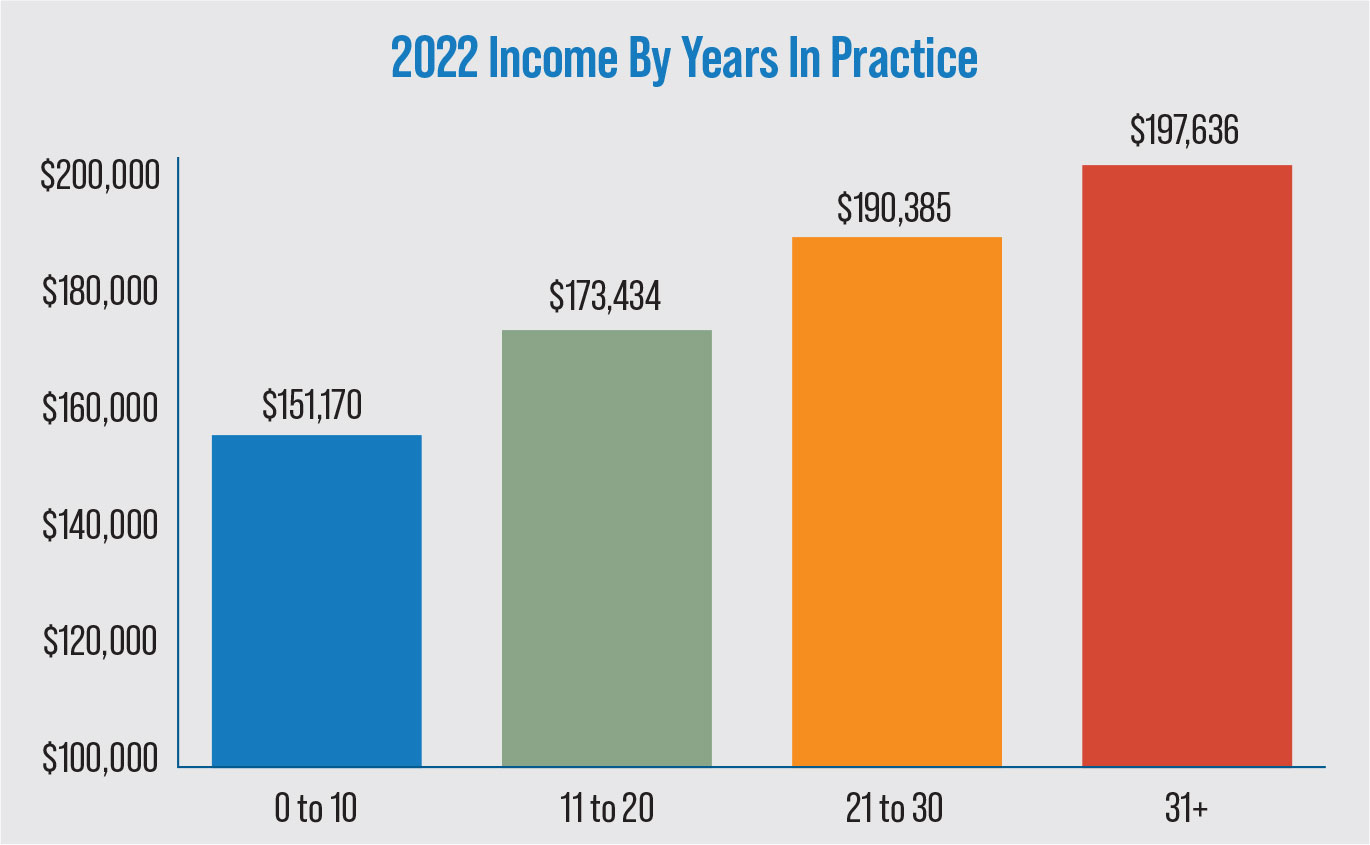 |
| Click image to enlarge. |
Earnings by employment experience seemed to follow the trend emerging from this year’s income survey: OD pay is stabilizing following an unstable period for the industry. The good news is that more experience equated to higher earnings to indicate that time and effort does pay off, at least for this year’s optometrists, who more than made up for the mid-career plateau their counterparts experienced in 2021.
Survey respondents with up to 10 years of experience made an average of $151,170 this year, down a mere 8% from 2021.
Those with 11 to 20 years of experience earned 15% more than their newer counterparts, at $173,434. This represents an unfortunate 10% decrease over 2022 for this group, however.
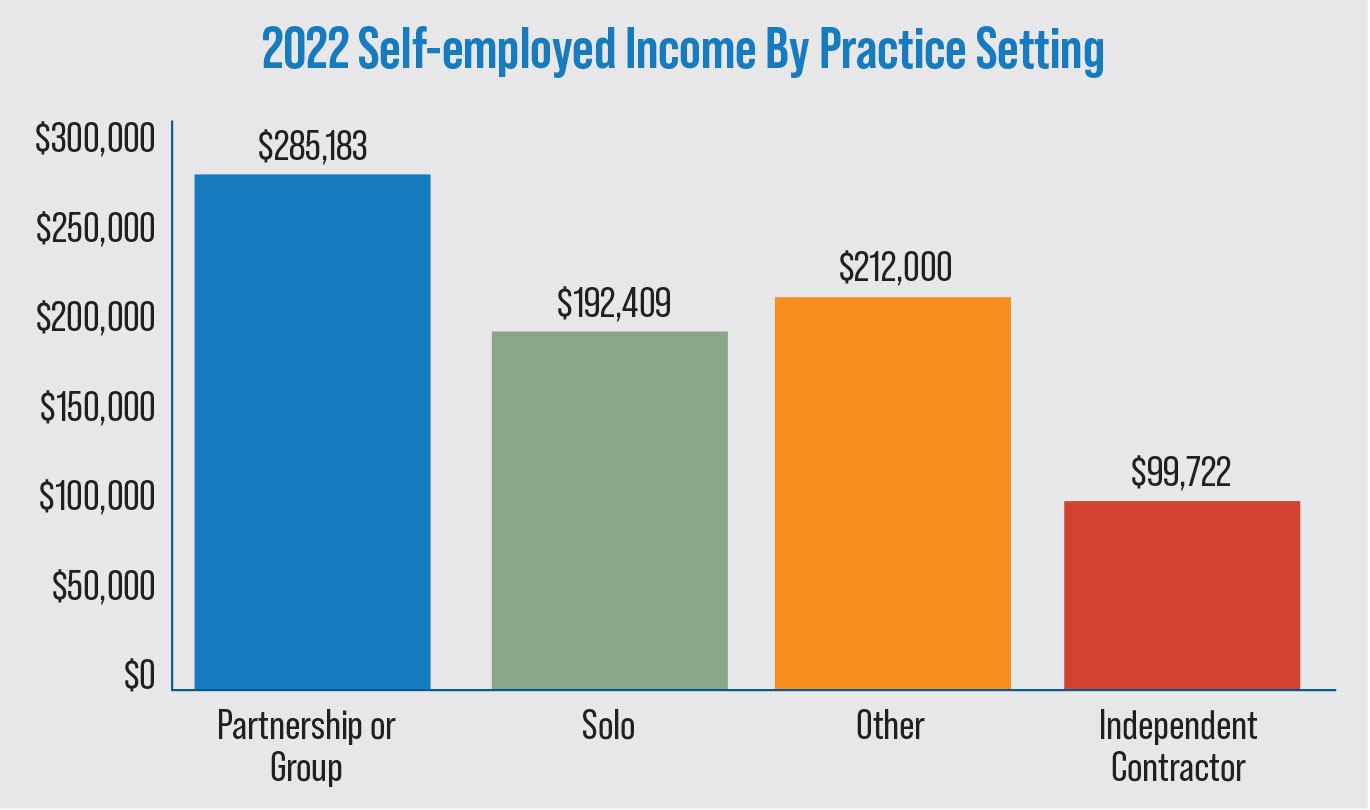 |
| Click image to enlarge. |
Reporting 10% more than the previous experience bracket, ODs with 21 to 30 years of experience earned an average of $190,385 in the last year—the only group to record a positive result from 2021 to 2022, with an 11% increase in take-home value.
Veteran optometrists—those with over 30 years of experience—made 4% less than they did last year but 4% more than their colleagues with 10 fewer years of experience this year, at $197,636.
Worker Wages
Being your own boss has proved time and time again to benefit ODs who carve their own paths. While only 42% of respondents identified as self-employed, these ODs made an average of $215,634 in 2022, 52% greater than those who are employed but only made $141,635 on average. This gap closed by 28% over the last year, with self-employed workers earning 14% less and employed workers earning 2% more.
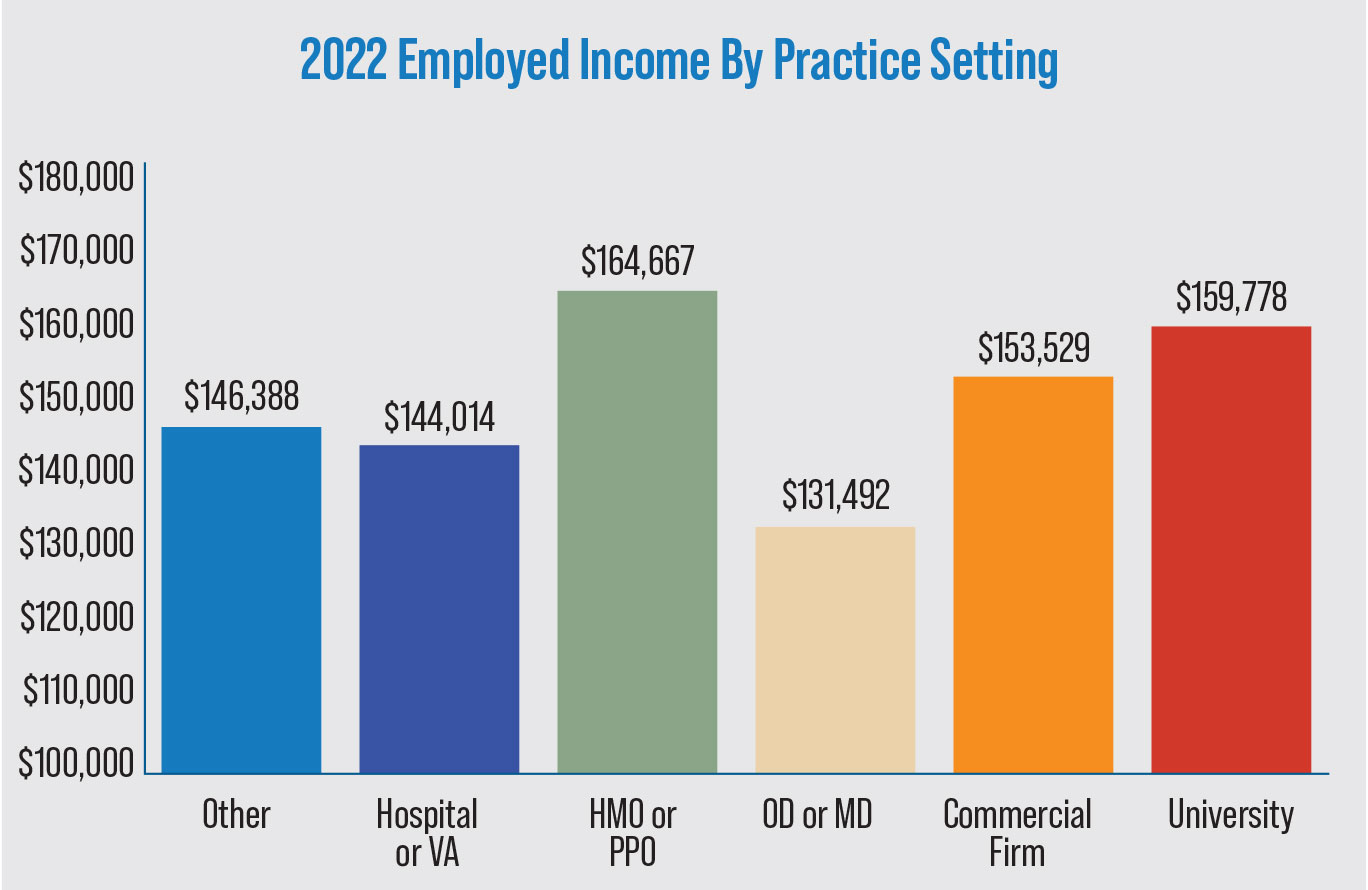 |
| Click image to enlarge. |
Of those who are employed, there was a significant leap toward working for another OD or MD, at 52%, with the rest of this year’s survey respondents employed at a commercial firm (20%), another institution (12%), a hospital or VA (7%), an HMO or PPO (5%) or a university (3%).
Working for another OD or MD dropped from one of the most profitable ventures in 2021 to the worst in 2022. These workers earned an average of $131,492, down 14% over the last year.
Hospital or VA staff (up 4% from last year to $144,014) and those who chose the “other” option (down 19% to $146,388) and topped the totem pole last year fell in rankings to make up two of the lower-paying gigs for ODs this year. Commercial firm workers landed the same ranking as 2021 but made 10% more to bring in an average of $153,529 this year.
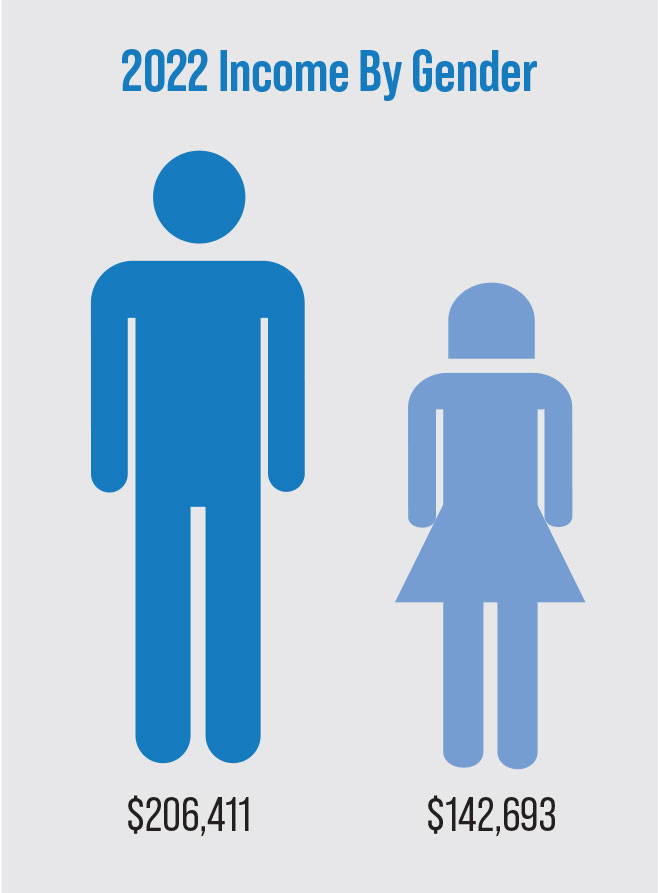 |
| Click image to enlarge. |
Employment through a university or an HMO or PPO, the least opportunistic settings for employed ODs in 2021, represented this year’s most financially attractive ventures, with the former making 35% more than their counterparts last year at $159,778 and the latter, a sizeable 91% more at $164,667.
On the other hand, looking at self-employed workers, many ODs made the switch to solo work this year, with 58% venturing out on their own, 32% contributing to a partnership or group, 8% identifying as an independent contractor and 3% choosing the “other” option. Members of a partnership or group were the only self-employed category to enjoy increased earnings over the last year, doing a flip-flop in rankings in the process.
Following the trend of the last several years, working as an independent contractor was the least profitable self-employment route, with ODs reporting an average of $99,722 in 2022, down 56% from 2021.
Solo work (down 25% over the last year to $192,409) and “other” self-employment opportunities (down 41% to $212,000) both fell a ranking to two of the more intermediary prospects in 2022.
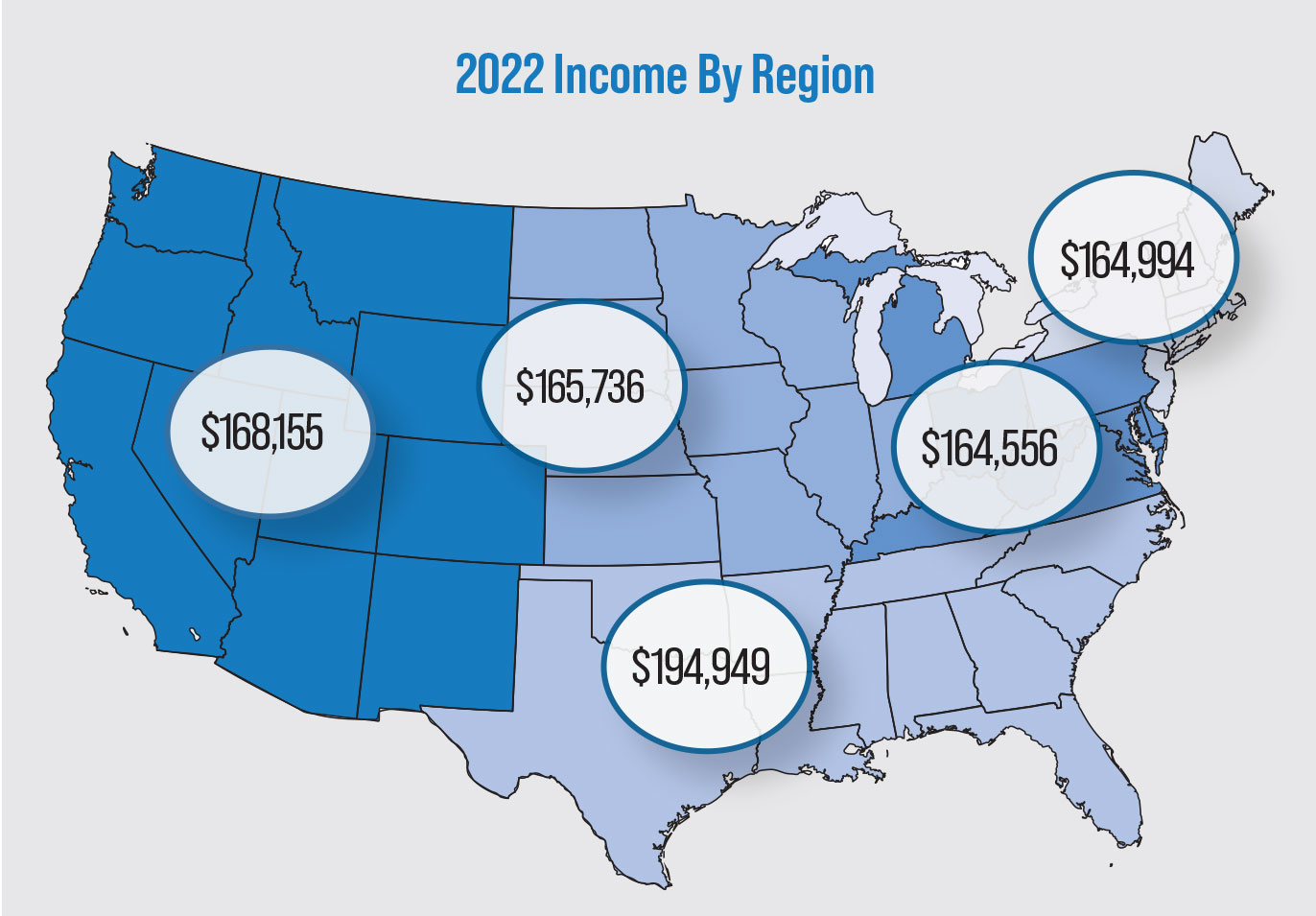 |
| Click image to enlarge. |
Moving from the bottom to the top of the chain, membership in a partnership or group came out ahead this year, earning 13% more than their colleagues last year at $285,183.
Regional Riches
As if physical distance isn’t enough to separate each region of the United States, from the least to the most profitable place to practice optometry in the country existed a 66% gap in earnings in 2022, wider than it’s been in previous years.
ODs who practice outside the continental United States—in Alaska or Hawaii—were the least well off this year, recording an average income of $117,500 in 2022. Those working in the Mid-Atlantic/Lower Great Lakes region moved down a ranking and made 3% less than their counterparts did last year at $164,556.
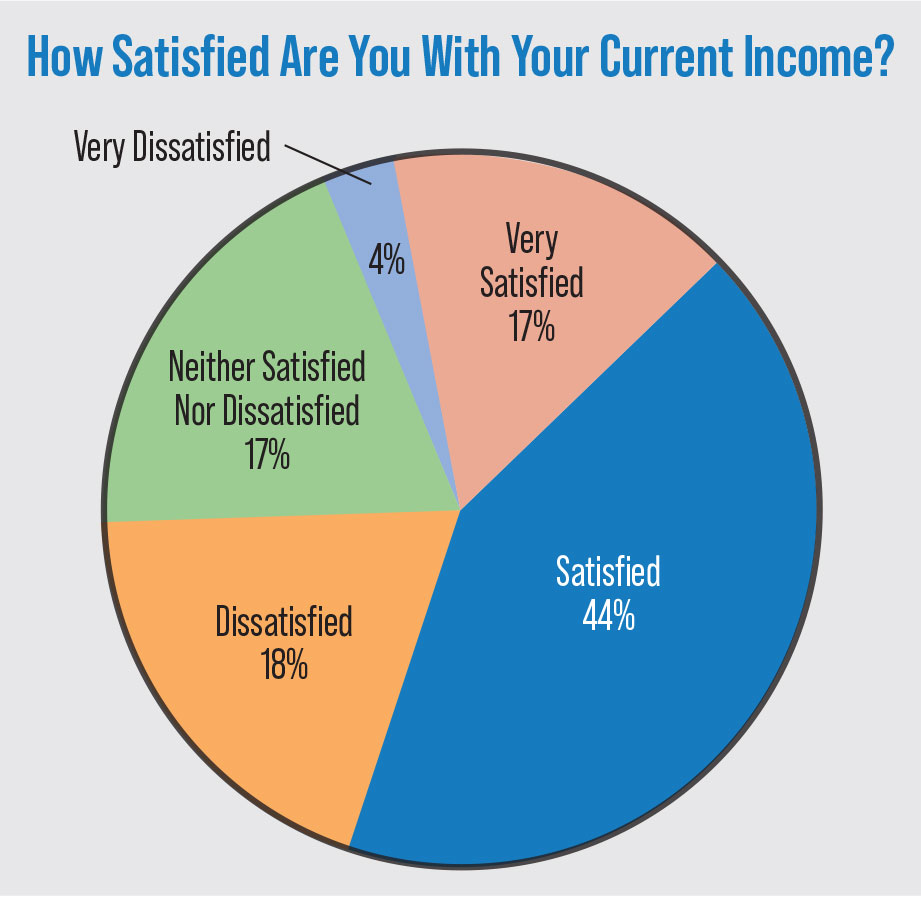 |
| Click image to enlarge. |
Almost mirroring the average annual income of their Mid-Atlantic/Lower Great Lakes colleagues, the Northeast (down 16% from 2021 to $164,994) and Midwest (down 25% to $165,736)—formerly at the top of the chain—both moved down two spots to become less financially attractive regions for ODs to practice in the United States.
Moving up from the bottom of 2021’s rankings, ODs living in the West reported an average take-home of $168,155 in 2022, up 10% from last year.
Stealing the spotlight in 2022 and upgrading from their position among the more intermediary places to earn a living as an optometrist were ODs in the South, who fell to parity with last year’s income at an average of $194,949.
Earning Equality
Optometry’s gender gap took a hit this year, widening by 31% over the course of 2022 to 45%. Men (46% of survey respondents) brought home 9% more than 2021 for an average of $206,411 on the year. Women earned 14% less than last year, at $142,693, to put male and female ODs at odds with each other when it comes to earning equality across genders, which existed for this year’s respondents at every level of experience.
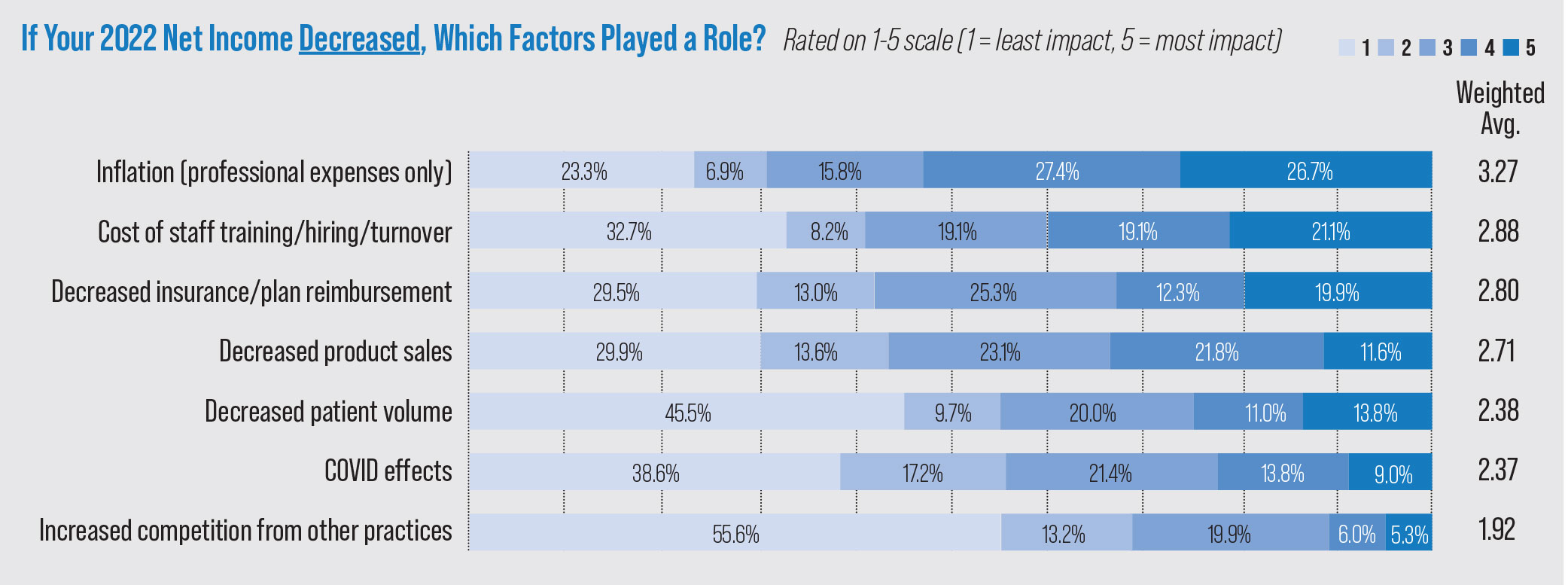 |
| Click image to enlarge. |
Men with zero to 10 years of experience in the field reported an average income of $185,249 in 2022, 40% more than female entry-level workers who made an average of $132,278 in the same year. The gap increased by 16% over the last year, with men in this experience bracket making 3% more than 2021 and women, 8% less for a widening of the divide.
Male optometrists with 11 to 20 years of experience in the field out-earned their female counterparts $194,567 to $159,168, closing last year’s female-dominated gap by 17% to zero it out then widen it by 22% in their favor in 2022. Men with this intermediate level of experience made 10% more than last year, while women made 23% less but more than every other experience level for females in 2022.
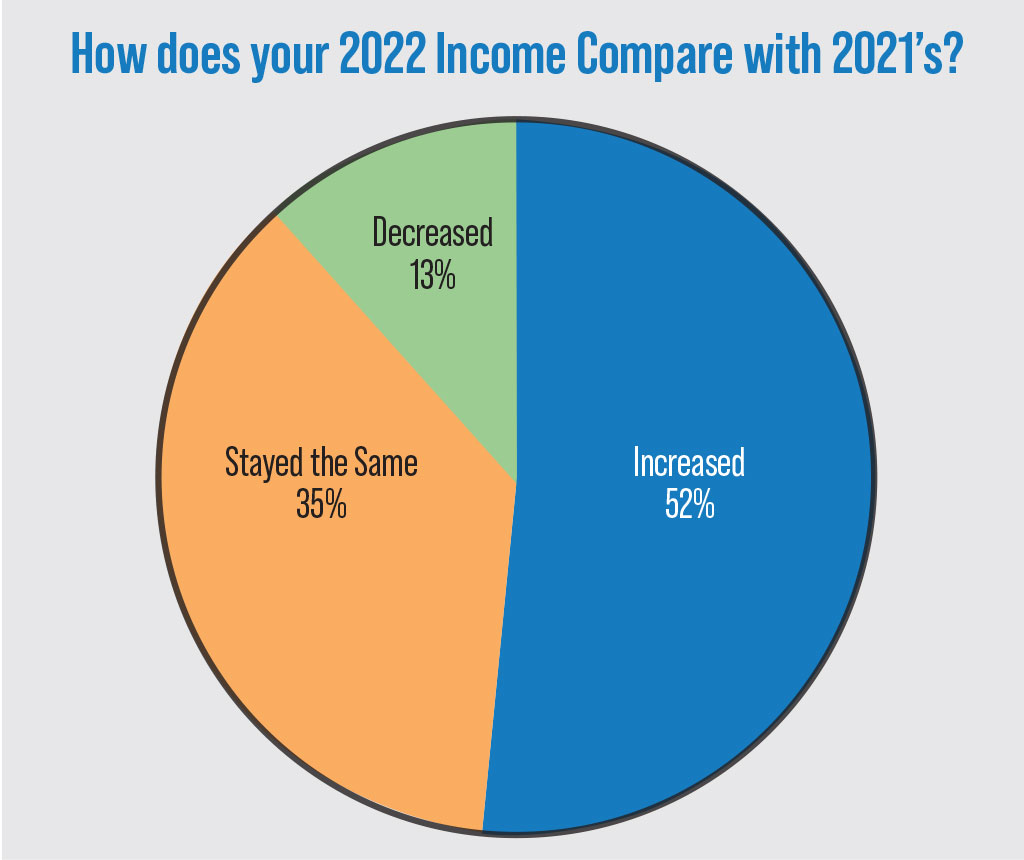 |
| Click image to enlarge. |
Men with 21 to 30 years of experience practicing optometry claimed an average take-home of $240,675 in 2022, 25% more than their counterparts made in 2021 and 78% more this year than their female colleagues in the same experience level, widening the gap by 46%. Females in this category reported an average income of $134,891, down 8% over the course of the last year.
The most veteran male ODs saw their income take a dip compared with other experience levels for men this year, still up by a smidge compared with last year’s numbers at $210,209. This represents a 33% increase (up 13% from last year) from their female veterans in the field who brought in $157,524, down 10% from 2021.
Lag and Lose
While not as prosperous a year for optometry as last, the majority of ODs seem to be taking a glass half full approach, with 61% reporting feeling satisfied or very satisfied with their income in 2022 (down from 70% in 2021). They claimed this was due in part to increased patient volume, product sales, professional fees, work hours and office staff.
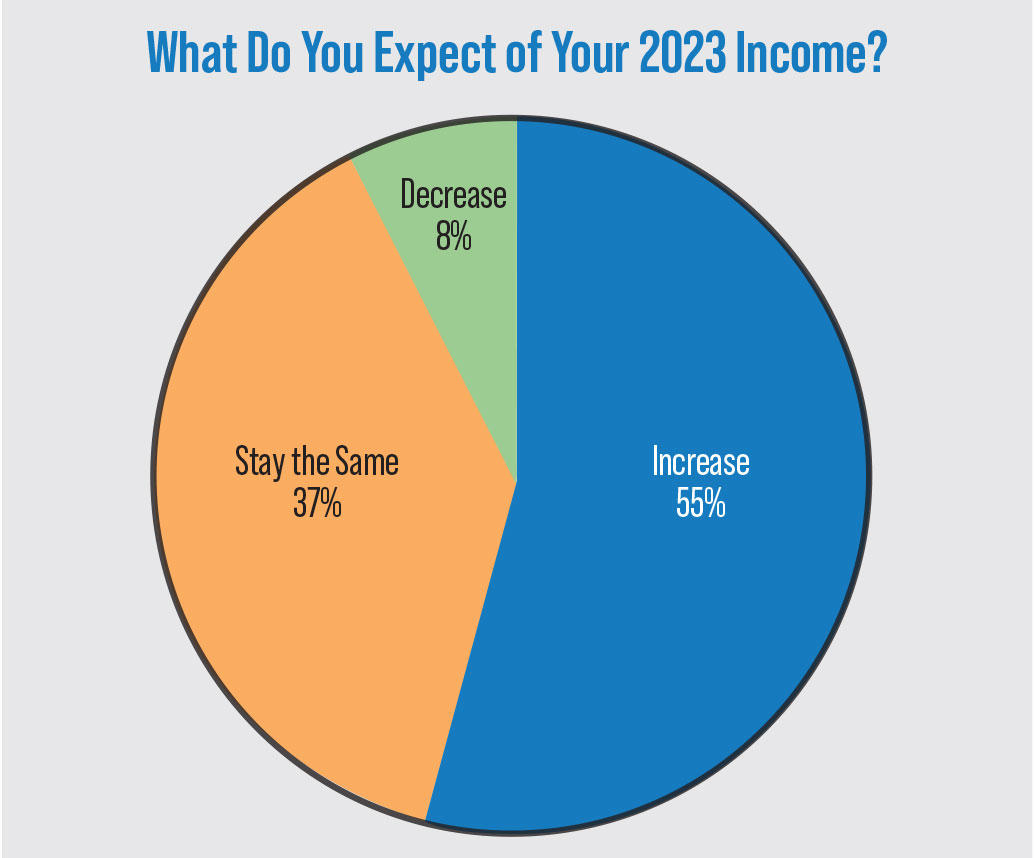 |
| Click image to enlarge. |
Year to year, ODs seem to credit optometry’s payout for their personal/professional balance, retirement savings, ability to pay off debts, comfortable lifestyle and flexible schedule, with survey respondents commenting that they love the job and how it benefits patients in need of eye care.
Unfortunately, in more recent years, more and more OD respondents have indicated their salary doesn’t reflect their work and the skyrocketing rate of inflation as patients face increased costs of goods and gas, with an impending recession upon us.
“OD pay is not keeping up with inflation, while student loans/optometry tuition is greatly outpacing it,” said one survey respondent. “Optometry schools are already having a problem filling their classes with quality applicants, and the current trends will make it worse.”
As for the topic of insurance reimbursement, one OD remarked that “the cost of doing business continues to rise, but reimbursements do not.” Another reported, “Reimbursement should be higher for the complexity of patients seen and amount of work performed.”
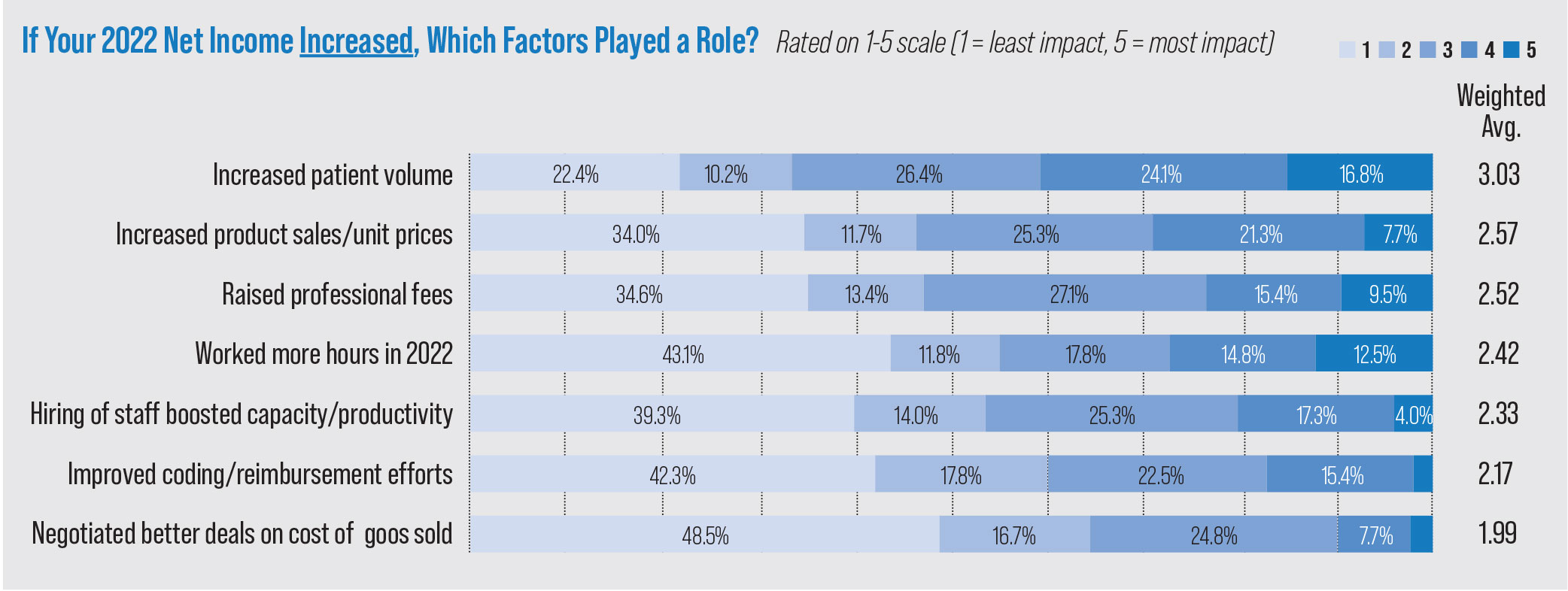 |
| Click image to enlarge. |
Add to the mix the global labor shortage and optometry’s unmet staffing needs and the field has found itself in a bit of a pickle as it tries to increase patient demand while lacking the workforce to back these efforts.
Looking to the future, 55% of survey respondents expect their income to increase in the coming year (down 68% from last year). One OD summed up what many seemed to be thinking, “I only wish optometry's profession could behave more like dentistry and make a stronger effort to protect the value of our professional services. If that were the case, I think all optometrists would be more satisfied with their annual income universally.”
Adopt and Adapt
As is to be expected, some ODs fared better financially than others this year, taking into account experience, employment, location and gender. All, however, hopefully benefited in one way or another from optometry’s full-forced attempt at a return to “normalcy” in light of COVID-19.
The majority of survey respondents indicated a desire to continue building on this momentum, outlining plans to increase their profitability across the board in the years to come. Potential ideas include offering specialty services (myopia management, specialty contact lenses, vision therapy) and investing in specialty equipment, increasing staffing and scheduling, focusing on billing and pricing efficiency and expanding work hours.
Optometry is certainly feeling the effects of an ever-changing global landscape but continues to meet incoming challenges head-on, adapting as necessary along the way to ensure the profitability of the field and the prosperity of its patients.

